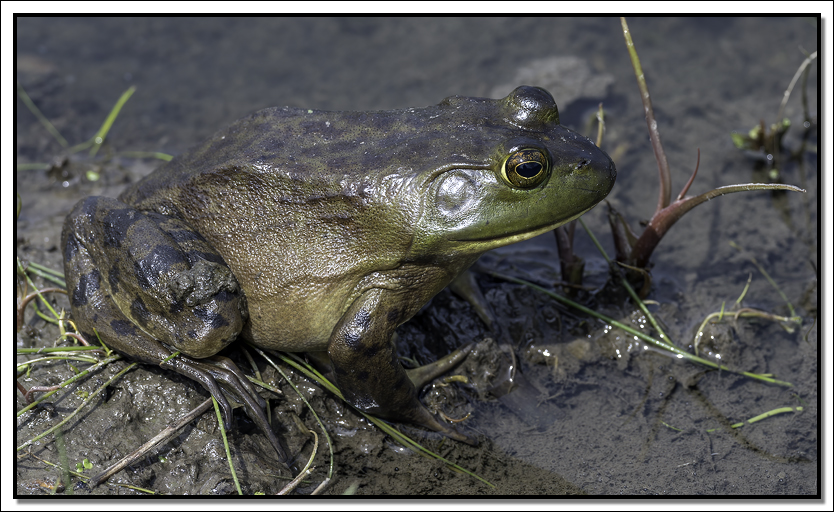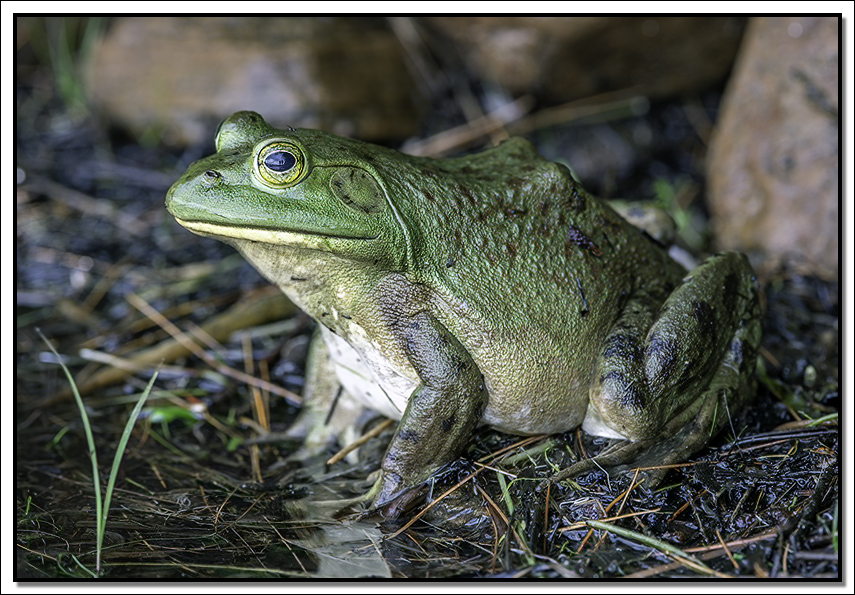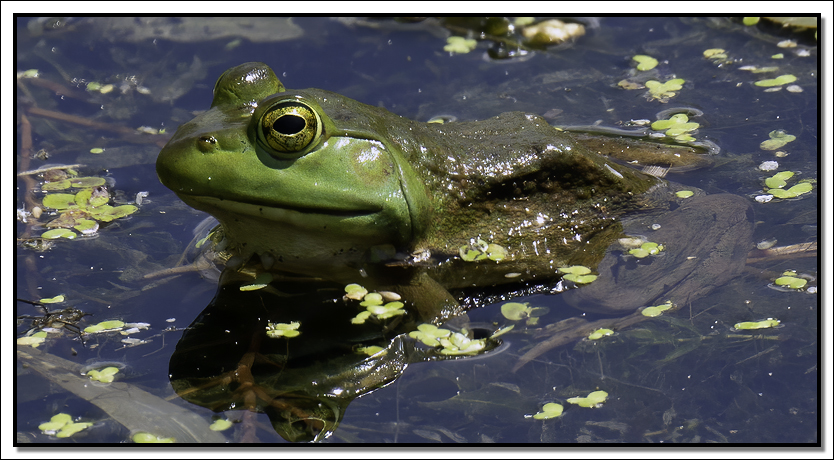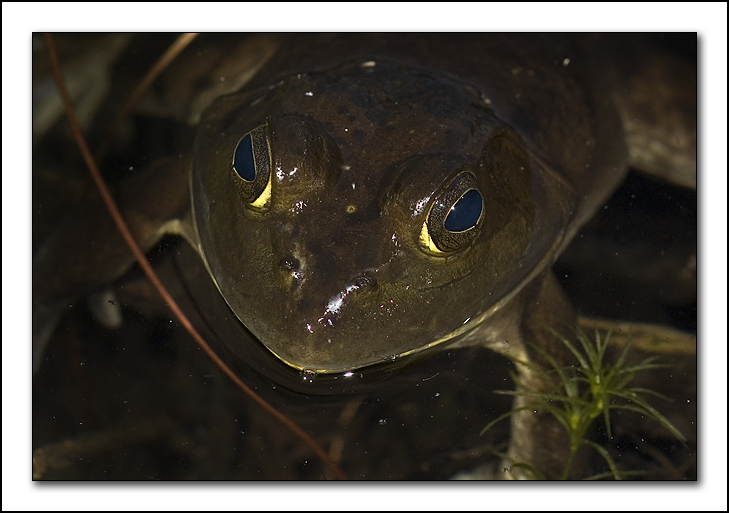Bullfrog
American Bullfrog (Lithobates catesbeianus )
The bullfrog is the largest frog in North America; they can grow to an astonishing length of 8 inches or more and weigh up to 1 kg (1.5 pounds). The bullfrog varies in colour from pale green to a dark greenish brown above, with a creamy white below and has variable dark mottling on the back or underside. Adult males have pale to bright yellow chins during the breeding season.
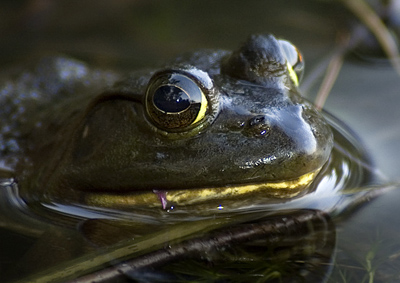 Bullgrogs are mostly nocturnal predators that will ambush and eat just about anything they can fit in their ample mouths, including insects, mice, fish, birds, and snakes. They sit quietly and wait for prey to pass by, then lunge with their powerful hind legs and mouths open wide.
Bullgrogs are mostly nocturnal predators that will ambush and eat just about anything they can fit in their ample mouths, including insects, mice, fish, birds, and snakes. They sit quietly and wait for prey to pass by, then lunge with their powerful hind legs and mouths open wide.
We have witnessed them eating frogs and small snakes. On a canoe trip, while sitting next to the campfire, a large bullfrog joined us. We were a bit confused why he paid us a visit, but it came to light when he snapped up a deer mouse that was scrambling around the site.
Small Bullfrogs look a lot like large Green Frogs, but there is a sure way to distinguish them. Green and mink frogs have a dorsolateral fold (a fold of skin running down each side of their back). Bullfrogs are distinguished by their very large tympani (eardrums), which are always larger than the eyes, especially in males. Bullfrogs have lateral folds but, unlike in other frog species, these folds wrap downward around the tympani rather than trailing down the back.
In Canada, American Bullfrogs hibernate during the winter and are active from April or early May until September or October, depending on the latitude.
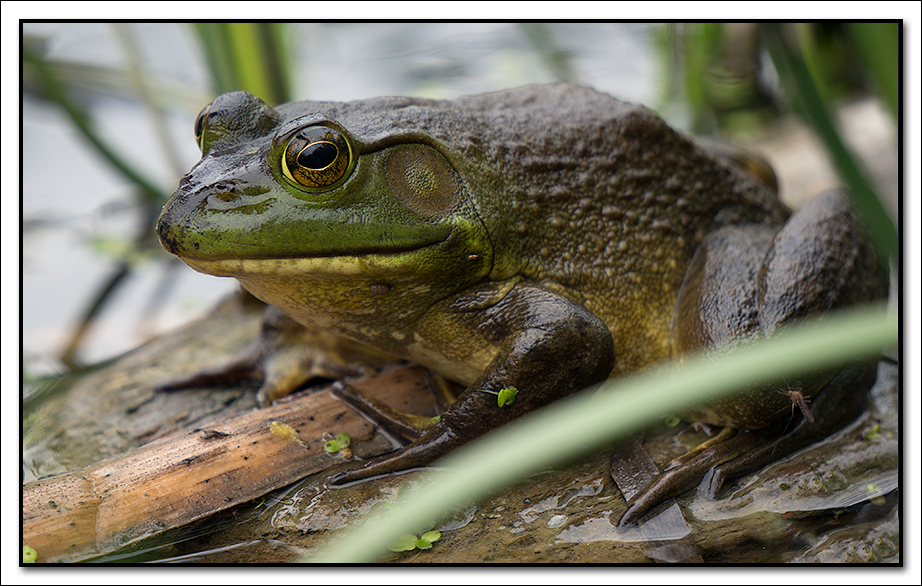
The bullfrog gets its name from the sound the male makes during the breeding season, which sounds similar to a bull bellowing. The bigger the Bullfrog, the lower frequency of the call. We love hearing the calls during the late spring, early summer. Bullfrogs breed later than most other frogs, usually from mid-June to late July on warm, humid or rainy nights.
Occasionally, bullfrogs have territorial disputes which sometime leads to sumo style wrestling matches. Bullfrogs aggresively protect their mating territories because the females chose their mate by how good the territory is as a source for food.
North American bullfrogs may remain at the tadpole stage for up to 3 years. A longer tadpole stage means a larger frog after metamorphosis, which usually means a better chance of survival.
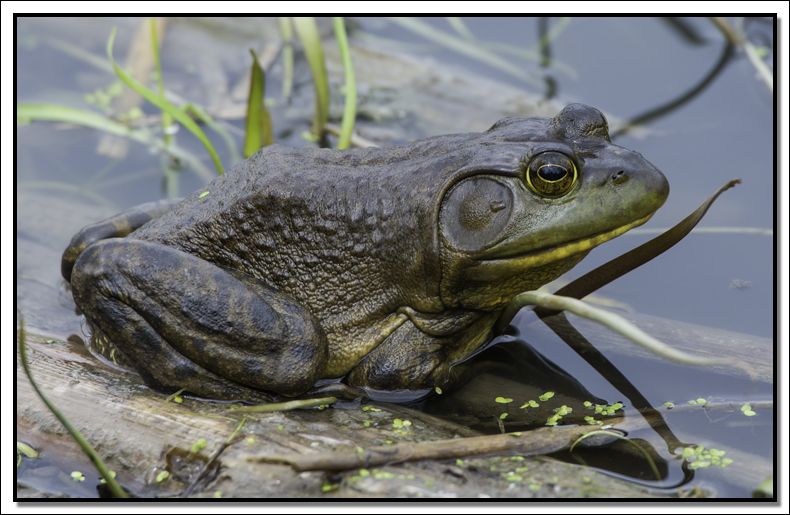
The male and female bullfrogs are distinguished by the size of the external eardrum (tympanum). The female's eardrum is approximately the size of the eye, while the male's is much larger than the eye. The sexes may also be distinguished by their throat colour; males have yellow throats, while females have paler cream or white throats.
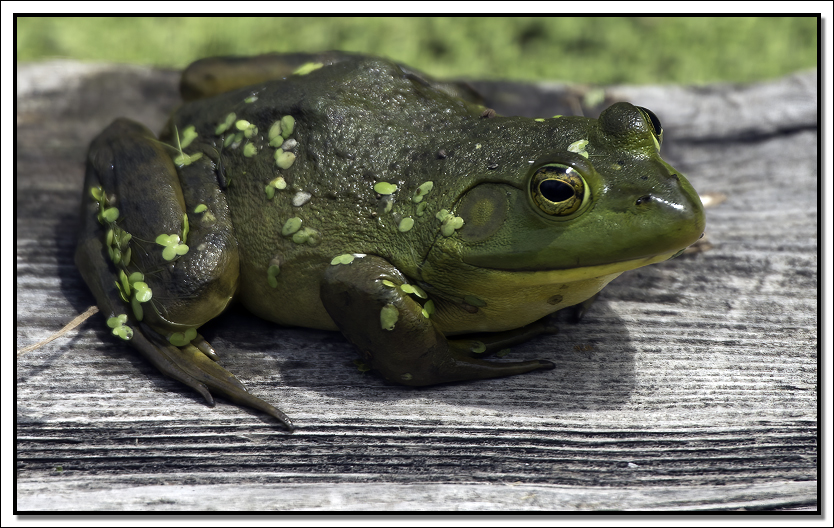
Adult bullfrogs can generally leap about 1 meter (3 ft), but they are able to jump a distance of 2 meters (6 ft) without difficulty.
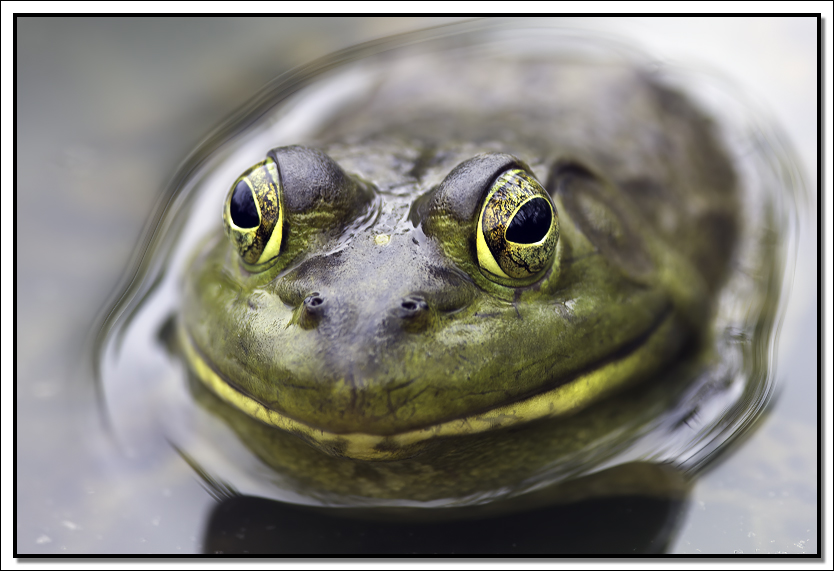
We have noticed a decline in the bullfrog population in our area. Harvesting for both food and educational purposes (i.e., dissection) has decimated native bullfrog populations in many wetlands.
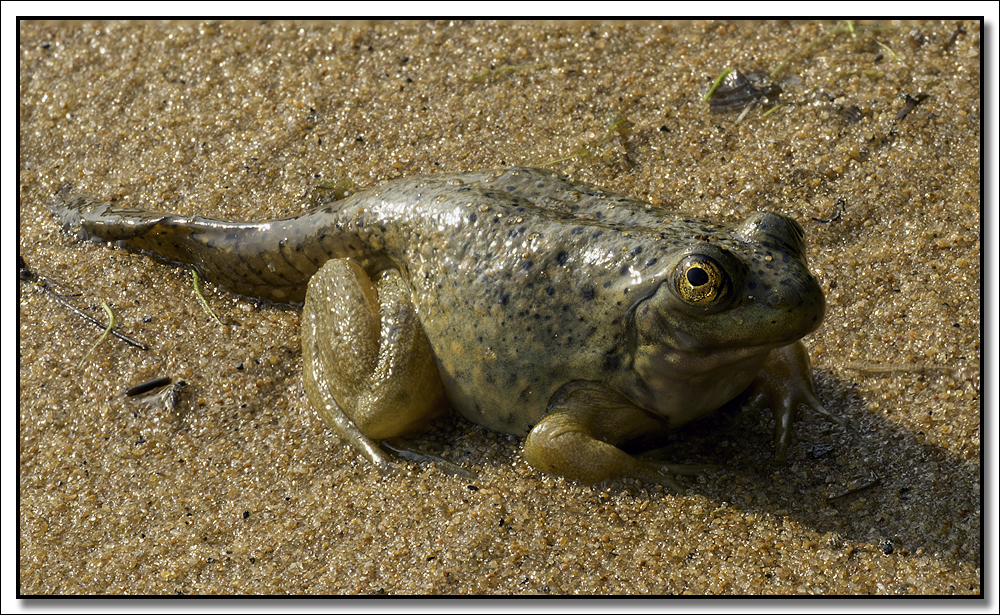
Some tadpoles will turn into froglets during their second summer, but many others will overwinter a second time and become adults during their third summer.
